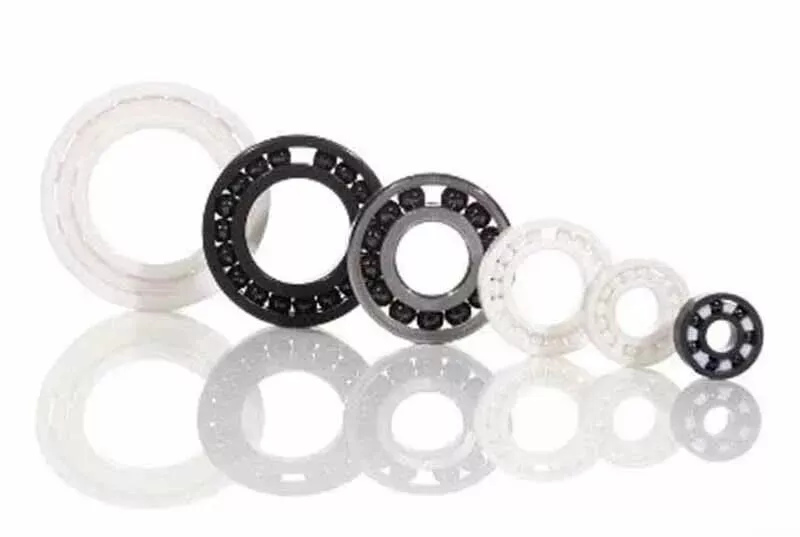Preface
With the improvement of people's living standards and the development of technology, from the appearance of SARS and H7N9 to the ongoing 2019-nCoV, the importance of primary healthcare is crucial to individuals, countries, and even the whole world. People's demand for hygiene and health is also increasing. Antimicrobial products gradually develop from the laboratory to civilian use, and antimicrobial fibers, plastics, ceramics, and metals that are continuously launched on the market are also popular among consumers. This article briefly introduces antimicrobial ceramics.

Antimicrobial ceramics refer to inorganic antimicrobial agents added to the glaze of sanitary ceramics or soaked, sprayed, or rolled on the glaze surface, which control pathogenic microorganisms on the surface of ceramic products below the designated level. The antimicrobial effect of antimicrobial ceramic products is directly related to the antimicrobial agent used, which can be roughly divided into the following four types:
1. Silver-based antimicrobial ceramics:
Refers to the addition of inorganic substances containing metal ions to the glaze, and the preparation of antimicrobial glaze through appropriate firing methods, and finally, the production of antimicrobial ceramic products. The Japanese company INAX has developed silver-containing antimicrobial ceramics and has applied for patents in Japan and internationally.
Antimicrobial mechanism:
(1) Since trace amounts of silver ions enter the interior of microorganisms, they will destroy the respiratory system and electron transport system of microorganisms (bacteria, viruses, etc.), which can cause the destruction of active enzymes or the death of amino acids.
(2) When silver ions and copper ions come into contact with bacteria and viruses, they will enter the microorganisms and cause the precipitation of their proteins and the destruction of their internal structures, thereby killing bacteria and viruses.
(3) The catalytic effect of silver ions can convert dissolved oxygen or dissolved oxygen in water into active oxygen, which has antimicrobial effects.
Advantages: The antimicrobial effect of silver-based ceramics can reach more than 90%, and they have good chemical stability and long-term antimicrobial function.
2. Photocatalytic titanium-based antibacterial health ceramics:
Photocatalytic titanium-based antibacterial health ceramics, also known as photocatalytic antibacterial ceramics, refer to ceramics prepared by adding titanium dioxide to the basic glaze, or by melting a titanium dioxide film onto the surface of ordinary sanitary ceramics through high-temperature sol-gel method. Japan is the earliest country to research and develop antibacterial ceramics, and TOTO Corporation in Japan developed photocatalytic antibacterial ceramics in 1993.
Antibacterial mechanism:
(1) Photocatalysts such as titanium dioxide, as a kind of semiconductor, can not only completely degrade harmful organic compounds in the environment to generate carbon dioxide and water under the condition of UV light containing its bandgap energy, but also remove toxic gases such as nitrogen oxides NOx, hydrogen sulfide, sulfur dioxide, etc. with low concentration in the atmosphere.
(2) Hydrogen peroxide and hydroxyl radicals generated under light have bactericidal effect.
(3) If silver ions are doped into titanium dioxide, the bactericidal effect can be improved. After the addition of silver ions, firstly, it can provide intermediate energy for titanium-based semiconductors, improve the quantum efficiency of light, and secondly, it can overcome the limitation that titanium-based catalysts need light to play a role, and improve the antibacterial effect of this kind of product in the absence of light.
Advantages: Titanium-based antibacterial ceramics can not only kill bacteria but also decompose oil stains, remove odors, and purify the environment.
3. Rare earth activated silver-based and photocatalytic composite antibacterial ceramics:
This kind of ceramics refers to antibacterial and health ceramics made by adding rare earth materials to silver-based and photocatalytic antibacterial agents.
Antibacterial mechanism:
(1) When UV light containing silver-based and photocatalytic antibacterial agents is irradiated, electrons and holes are produced successively due to the existence of the outer valence electron band, and the rare earth element valence electron band can capture photocatalytic electrons. The electron-hole concentration generated by antibacterial agents with rare earth added will be much higher than that of antibacterial agents without rare earth added.
(2) Some of the electrons jumping to the rare earth element valence electron band are easily deprived of silver atoms to form silver ions.
Advantages: Due to the activation of rare earth elements, the surface activity of antibacterial agents of this kind of ceramic products is increased, thereby improving the antibacterial and bactericidal effects, and the killing rate of various bacteria is as high as 95% or more.
4. Antibacterial ceramics made by adding far-infrared materials and their oxides to photocatalytic antibacterial agents:
(Far-infrared materials refer to zirconium, manganese, iron, cobalt, nickel, chromium, etc.)
Antibacterial mechanism:
This kind of ceramic product can emit far-infrared rays with a wavelength of 8-18μm at room temperature, which can promote human microcirculation in the field of medical and health care. Studies have shown that this kind of antibacterial ceramics are more suitable for use under white fluorescent lighting.
Disadvantages: The introduction of zirconium dioxide will reduce the bactericidal efficiency; transition metal ions will cause different colors on the glaze surface, so it is not suitable for daily-use ceramics, but it does not affect the appropriate introduction of antibacterial ceramics in building and sanitary ceramics.
In places such as kitchens and bathrooms that are relatively humid, and in public places such as hospitals and schools with frequent personnel flow, it is easy to be contaminated and breed bacteria, and these places urgently need wall materials and sanitary ware with antibacterial and self-cleaning functions; and ceramic filtration devices in water purification equipment also have antibacterial needs, which have greatly promoted the development of antibacterial ceramics.
In addition to the rapid development of antibacterial ceramics in Japan, China successfully developed photocatalytic surface-coated ceramic tiles and antibacterial ceramics doped with rare earth activated antibacterial materials in 1997 by the Institute of Building Materials Science of the Communist Party of China, and cooperated with enterprises such as Foshan Garden Ceramics Factory in Guangdong and Shandong Weifang Meilin Kiln Industry Co., Ltd. to launch antibacterial ceramic tiles and sanitary ware. Today, many enterprises and scientific research institutions in Guangdong Foshan, Jiangxi Jingdezhen, Shandong, Tangshan, and other places have achieved partial results industrialization in antibacterial building ceramics, antibacterial daily-use ceramics, and other fields. Compared with many developed countries abroad where antibacterial ceramics have been put into the market, although China has reported achievements and a small number of products have been launched, it still needs to make breakthroughs in technology and product costs to truly enter the market on a large scale.
Declaration: This article is provided by CERADIR™ users or obtained from Internet, the content does not represent the position of CERADIR™. We are not responsible for the authenticity/accuracy of the article, especially the effects of the products concerned. This article is for study only, it does not constitute any investment or application advice. For reprinting, please contact the original author. If it involves the copyright and/or other issues, please contact us and we will deal with it asap! CERADIR™ has the interpretation of this declaration.







